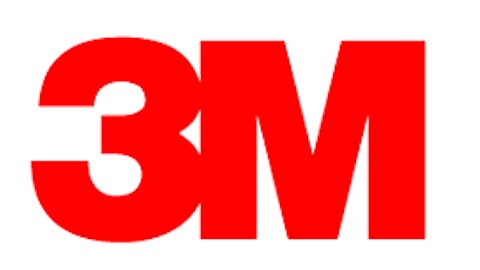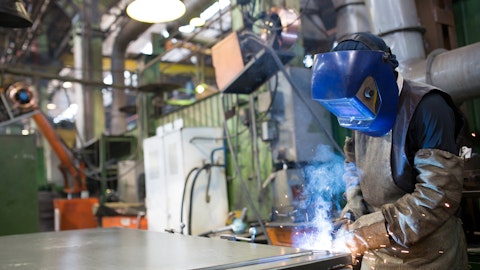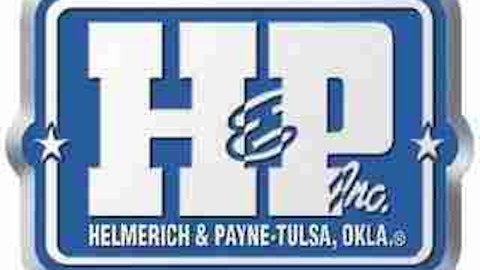Dover Corp (NYSE:DOV) has increased its dividend for 60 consecutive years, trades at a dividend yield of 3.2%, and has a relatively low payout ratio of 30%. The stock also trades for just 13.5x forward earnings guidance. Why is this high quality industrial business looking so cheap? Energy markets.

DOV generated over 30% of its earnings from its Energy segment in 2014, with most of its exposure coming from drilling and production operations in North America (one of the most vulnerable spaces in the energy sector right now).
Energy headwinds are starting to create a compelling valuation case to add DOV to our Top 20 Dividend Stocks portfolio, but they could persist for much longer than investors expect.
DOV is not very popular among the hedge funds and other institutional investors tracked by Insider Monkey. At the end of September 2015, 25 funds from the Insider Monkey database held shares of DOV, down from 26 a quarter earlier. Moreover, the aggregate value of holdings held by these funds slid to $430.09 million from $610.50 million during the quarter and represented 4.80% of the company at the end of September. Among the top shareholders of DOV are Jeffrey Gates’ Gates Capital Management and Richard S. Pzena’s Pzena Investment Management.
Let’s take a closer look at DOV’s business.
Business Overview
DOV was incorporated in 1947 and is one of the largest diversified manufacturers in the world with over $7 billion in annual revenue. The company delivers a wide range of equipment and components, specialty systems, and support services that are sold to thousands of customers across virtually every end market.
By geography, 60% of DOV’s 2014 revenue came from the U.S., 16% from Europe, 10% from Other Americas, 9% from Asia, and 5% from the Rest of the World.
Segments
Energy (26% of 2014 revenue, 34% of earnings): products include artificial lifts, pumps, sensors, and monitoring solutions for customers in the drilling and production markets. DOV helps customers extract oil and gas more efficiently and safely.
Engineered Systems (31% of revenue, 39% of earnings): DOV helps drive efficiencies for customers in printing, identification, vehicle service, and waste-handling equipment. Products in this segment include automation components, printing systems, hydraulic components, electronic components, 3D printing tools, and more.
Fluids (18% of revenue, 19% of earnings): products include strategically engineered specialized pumps, tubing, fueling, vehicle wash, and dispensing systems. DOV’s components and equipment are used for fueling and vehicle wash and for transferring and dispensing critical materials in numerous end markets such as chemicals, food, and pharmaceuticals.
Refrigeration & Food Equipment (25% of revenue, 18% of earnings): DOV’s products reduce customers’ total cost of ownership in refrigeration, electrical, heating and cooling systems, and food and beverage packaging. Products include commercial refrigerator and glass doors, lighting systems, food processing and packaging solutions, cooking preparation equipment, and more.
Business Analysis
DOV’s business model shares many traits with ITW’s (see our analysis of ITW here). Perhaps it is no surprise that they are both dividend aristocrats.
Both of these companies built up their businesses through acquisitions over the course of many decades. They maintained decentralized organizational structures to stay nimble and entrepreneurial while implementing productivity measures across their businesses. For example, the Dover Excellence program is DOV’s continuous improvement initiative. This creates a culture filled with problem solvers and solution providers for customers, helping DOV maintain its strong market share positions and stay ahead on the innovation curve. It also helps the company generate substantial free cash flow and consistently improve its profitability.
DOV has also been able to build up a portfolio of mission-critical products that serve highly profitable market niches. The company has established a relationship for quality and excellent customer support, making it a top vendor that customers want to partner with to get their job done right.
DOV’s global operations also help it reliably serve multinational customers thanks to its strong distribution network. For example, if an oil customer’s pump dies out, it needs a new one as soon as possible or its project will lose money. DOV’s distribution network alleviates this risk.
Operating on a global basis, DOV’s scale helps it efficiently expand the breadth of its product offerings through innovation and acquisitions. From 2012 to 2014, DOV spent over $2.2 billion to acquire 24 businesses. The company’s acquisition targets enhance DOV’s existing businesses through their global reach and customers or by broadening their customer mix.
Finally, the management team has remained disciplined with capital allocation. The team is constantly trying to reduce DOV’s exposure to cyclical markets and focus on higher margin growth spaces. From 2012 through 2014, DOV sold two businesses for about $270 million and executed a spin-off of electronics component manufacturer Knowles. These efforts help DOV maintain a strong return on invested capital and avoid growing too far beyond its core strengths.





